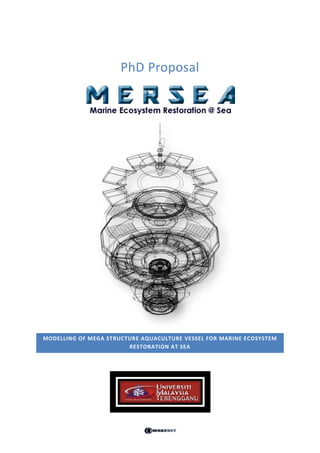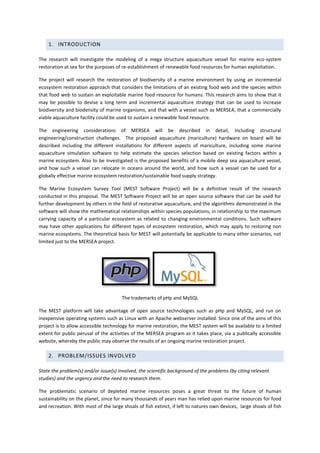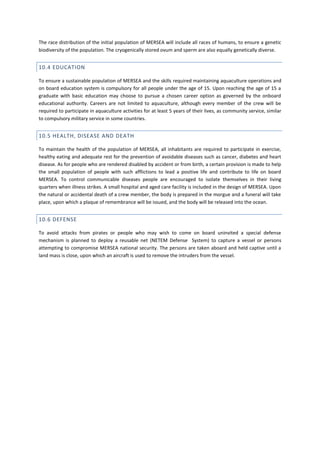This PhD proposal by Chris Morton focuses on the modeling of a mega structure aquaculture vessel, MerSea, aimed at restoring marine ecosystems and sustainable food resources through an incremental aquaculture strategy. It outlines the engineering considerations, challenges, expected outcomes, and the development of an open-source marine ecosystem survey tool, MEST, to aid in aquaculture initiatives. The research highlights the significance of restoring biodiversity and addressing the urgent issues of depleted marine resources for future human sustainability.































